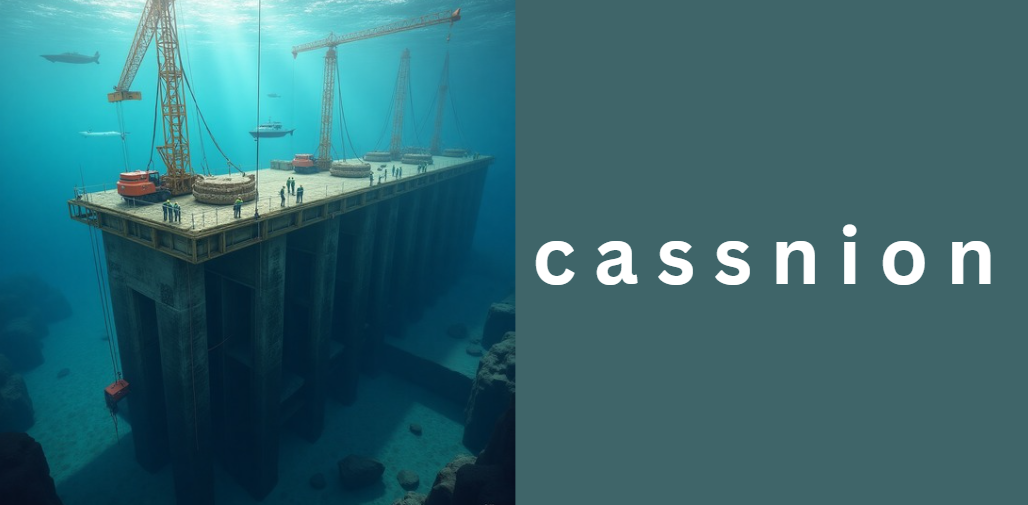Comprehensive Guide to c a s s n i o n
c a s s n i o n is a term that carries a multifaceted meaning, reflecting its use in both military logistics and construction engineering. Whether referring to a robust, wheeled vehicle designed to transport artillery ammunition or to a specialized watertight chamber used for underwater construction, the word has evolved significantly over time. In this guide, we delve into its definition, historical origins, technical design, and the modern-day applications that continue to make c a s s n i o n an indispensable tool in various fields.
Understanding c a s s n i o n not only enriches one’s appreciation of historical and contemporary engineering marvels but also highlights the interplay between tradition and innovation. This resource is structured to be engaging and accessible, with clear explanations, lists for readability, and tables that summarize key information.
Definition and Etymology
Definition of c a s s n i o n
In its most common usage, c a s s n i o n refers to two primary things. First, in a military context, it denotes a specialized two-wheeled vehicle designed to carry artillery ammunition, often attached to a horse-drawn limber. This usage emphasizes both functionality and the critical role the vehicle plays in safely transporting explosive materials during maneuvers or ceremonial events.
Second, in the field of construction and engineering, c a s s n i o n describes a watertight chamber employed during underwater excavation or used as a foundation for large structures. Such chambers allow engineers to work in dry conditions beneath the water surface and are essential for building bridges, docks, or underwater pipelines.
Etymology and Origins
The word c a s s n i o n has its roots in French, derived from Middle French and ultimately from the Latin word capsa, meaning “box” or “chest.” Historically, this term evolved to signify a container or coffer, which later extended to specialized vehicles and structural devices. Over time, as military and construction needs developed, the meaning of c a s s n i o n expanded to cover these modern applications while still retaining echoes of its original sense of a robust, secure container.
Pronunciation and Variations
The pronunciation of c a s s n i o n varies slightly by region. In American English, it is often pronounced /ˈkeɪ-sɒn/, while in British English the pronunciation may be /kəˈsɒn/. These regional differences reflect the term’s long history and widespread use across various English-speaking countries.
Historical Background and Context
Early Uses in Military and Construction
The early use of c a s s n i o n can be traced back to military applications where safe transport of ammunition was paramount. In early military campaigns, caissons were critical components, serving as both logistical aids and as part of ceremonial processions.
Their robust design ensured that valuable and dangerous materials could be moved securely and efficiently. Concurrently, in the realm of construction, the concept of a caisson as a watertight chamber emerged as a solution to the challenges of building on or beneath water. These early innovations laid the foundation for the modern interpretations of c a s s n i o n.
Evolution Over Time
As technology progressed, the design and function of c a s s n i o n evolved significantly. In the military sector, caissons became more refined with advancements in materials and vehicle design, transitioning from horse-drawn carriages to mechanized versions in some cases.
In engineering, the evolution of caisson construction saw the adoption of reinforced concrete and steel, which increased the safety and durability of underwater structures. A timeline of these changes reveals a gradual shift from rudimentary designs to the highly engineered systems used today.
Different Meanings and Applications
Military Application
In military terminology, c a s s n i o n specifically refers to a vehicle used for transporting ammunition. These vehicles, traditionally drawn by horses, have played a crucial role in battlefield logistics. Their sturdy construction and capacity to safely move explosive materials under adverse conditions made them indispensable during wars. Today, while modern logistics have evolved, caissons still feature in ceremonial events and historical reenactments, symbolizing the rich heritage of military engineering.
Construction and Engineering Use
Within construction, c a s s n i o n refers to a type of watertight chamber used in underwater work. Engineers use caissons to create dry work environments beneath water, allowing for the excavation and foundation-laying necessary for large structures such as bridges and docks.
The design of these caissons is highly technical, requiring careful consideration of water pressure, structural integrity, and material durability. The modern caisson is a marvel of engineering, combining traditional methods with contemporary materials like reinforced concrete and steel.
Other Symbolic and Practical Uses
Beyond its primary uses, c a s s n i o n has also taken on symbolic meanings. Historically, it has been used to refer to chests or coffers, echoing its Latin root capsa. In literature and art, the image of a caisson can evoke ideas of security, durability, and the safeguarding of valuable items. This symbolic use, while less common in technical discussions, adds a layer of cultural richness to the term.
Technical Details and Operational Aspects
Design and Engineering of c a s s n i o n
The design of c a s s n i o n is governed by rigorous engineering principles. In the military context, the vehicle must be strong enough to transport heavy loads and absorb shocks during movement. In construction, the caisson must be watertight and capable of withstanding external water pressure. Key design features include reinforced supports, sealed joints, and specialized materials that prevent water ingress.
Materials and Construction Techniques
Modern c a s s n i o n structures are constructed using materials such as reinforced concrete, steel, and advanced composites. These materials offer a balance between durability, strength, and resistance to environmental factors. The following table summarizes common materials and their applications:
| Material | Advantages | Typical Use |
|---|---|---|
| Reinforced Concrete | High durability and strength | Underwater foundations, large-scale caissons |
| Steel | Flexibility and ease of assembly | Mobile military caissons, temporary structures |
| Composite Materials | Lightweight and corrosion-resistant | Specialized applications in modern construction |
Safety Measures and Regulations
Safety is paramount when designing and operating a c a s s n i o n. In construction, strict safety standards ensure that caissons are constructed to prevent collapse and water ingress, protecting both workers and the integrity of the structure. Similarly, military caissons adhere to stringent guidelines to ensure the safe transport of ammunition. Regulatory bodies set clear standards that must be met in both sectors, and regular inspections and testing are conducted to maintain compliance.
Modern Applications and Case Studies
Contemporary Use in Construction Projects
Today, the use of c a s s n i o n in construction is more relevant than ever. Engineers use caissons in a variety of projects, from building bridges over turbulent waters to constructing offshore platforms. Case studies of recent projects demonstrate how modern techniques have improved the efficiency and safety of caisson construction. These projects often involve cutting-edge technology such as digital modeling and real-time monitoring of structural integrity.
Military Ceremonies and Historical Reenactments
In the military sphere, caissons continue to hold symbolic importance. They are prominently featured in ceremonial events and historical reenactments, where they serve as a reminder of the logistical challenges of past wars. These events not only honor military heritage but also educate the public about the evolution of military technology.
Innovative Developments and Future Trends
Advancements in materials science and digital engineering are paving the way for the next generation of c a s s n i o n. Future trends may include the use of smart materials that can self-monitor structural integrity or modular caisson systems that can be rapidly deployed in emergency situations. As research continues, the integration of digital technologies will further optimize the design, construction, and maintenance of these critical structures.
Comparison with Similar Concepts
It is helpful to compare c a s s n i o n with similar structures to understand its unique properties. For instance, while traditional coffers or chests share a common ancestry with caissons, the latter are specifically engineered for high-stress, high-risk applications. The table below highlights some key differences:
| Feature | c a s s n i o n | Traditional Coffers |
|---|---|---|
| Primary Use | Ammunition transport; underwater construction chamber | Storage of valuables; decorative purposes |
| Structural Design | Watertight, reinforced for pressure resistance | Typically not engineered for extreme conditions |
| Historical Significance | Deep roots in military and engineering innovation | More symbolic and ceremonial |
Frequently Asked Questions (FAQ)
Q: What are the common engineering challenges encountered when constructing or deploying a c a s s n i o n?
One of the major challenges is ensuring that the structure remains completely watertight under high external pressures. Engineers must carefully plan the reinforcement of the walls, joints, and seals. In addition, the process of sinking the caisson and excavating material from within demands precise control over water levels and soil stability. These challenges require rigorous testing and adherence to strict safety protocols.
Q: How does the design and construction of a c a s s n i o n differ between regions or countries?
Different countries have developed their own engineering standards and construction methods based on local environmental conditions and historical practices. In some regions, the use of advanced composite materials and digital modeling is common, while in others traditional methods using reinforced concrete remain prevalent. These regional differences can affect factors such as durability, cost-effectiveness, and the overall aesthetic of the finished structure.
Q: Are there any environmental considerations or impacts associated with the use of a c a s s n i o n in construction projects?
Yes, environmental impact is a significant concern. The construction and operation of caissons can affect local ecosystems, particularly in underwater or river environments. Measures must be taken to minimize disturbances to aquatic life, manage sediment displacement, and control noise pollution. Sustainable practices and careful planning are critical to reduce the ecological footprint during both construction and operation.
Q: What are some notable historical or modern projects where a c a s s n i o n played a crucial role?
Several landmark construction projects have utilized caissons to great effect. Historically, caissons were essential in building major bridges and docks during the industrial revolution. In modern times, they are integral to the construction of underwater tunnels and offshore platforms. Famous projects include the foundations for large urban bridges and critical infrastructural developments in coastal cities, where the caisson technology ensured a stable base in challenging environments.
Q: How is technology shaping the future of c a s s n i o n applications in construction and military logistics?
Emerging technologies are revolutionizing caisson design and monitoring. For instance, smart sensors and real-time digital monitoring systems now help engineers track structural integrity during installation and throughout the lifespan of the structure. Advances in materials science, such as the development of high-performance composites, are enhancing the durability and efficiency of caissons. These innovations promise to make future projects safer, more sustainable, and more cost-effective.
Additional Resources and Further Reading
To continue your exploration of c a s s n i o n, a selection of additional resources is provided. Readers are encouraged to consult academic journals, technical papers, and authoritative online dictionaries for further insights. Notable references include:
- Scholarly articles from engineering and military history journals.
- Detailed definitions and historical entries in dictionaries such as Merriam-Webster.
- Video tutorials and documentaries on caisson construction and military logistics.
Conclusion
In summary, our comprehensive guide to c a s s n i o n offers an in-depth look at its multifaceted nature. We explored its definitions, historical evolution, technical design, and modern applications in both military and construction contexts. By understanding the engineering principles, material choices, and safety regulations that underpin c a s s n i o n, readers gain a deeper appreciation for its critical role throughout history and its ongoing relevance today.
This resource not only serves as a definitive guide for enthusiasts and professionals alike but also provides practical insights and expert perspectives that can drive further innovation. We encourage you to explore the additional resources provided and share your thoughts or questions for continuous learning.
Read more
Ultimate Guide to pont l’eveque cheese microbiome
Ultimate Guide to the zastava m57-bolt-hold-open-on-last-shot
Comprehensive Guide to rift game imperishable sun
Comprehensive Guide to retro bowl unblocked games 76
Ultimate Guide to daz studio medical gas mask: In-Depth Review, Setup & Customization






